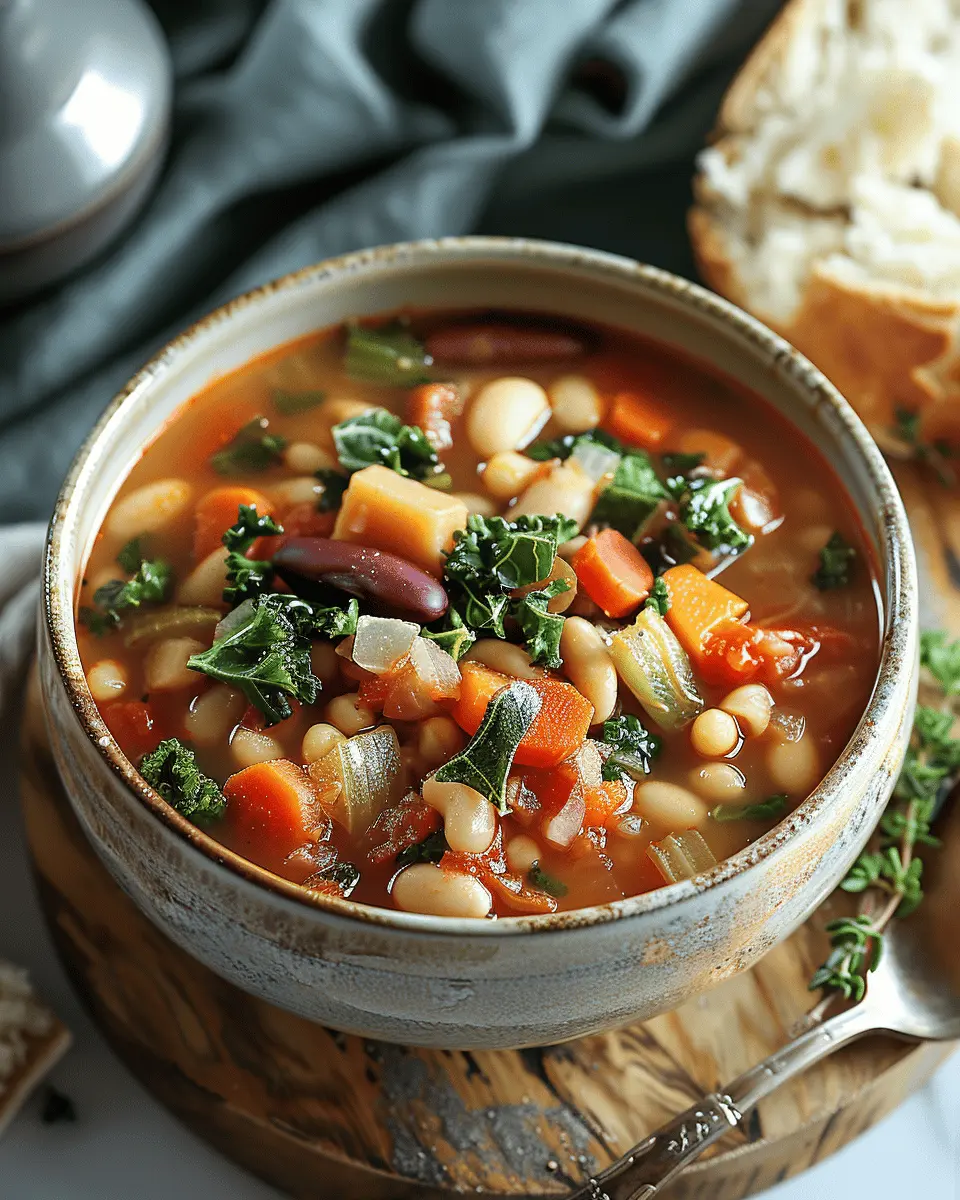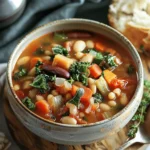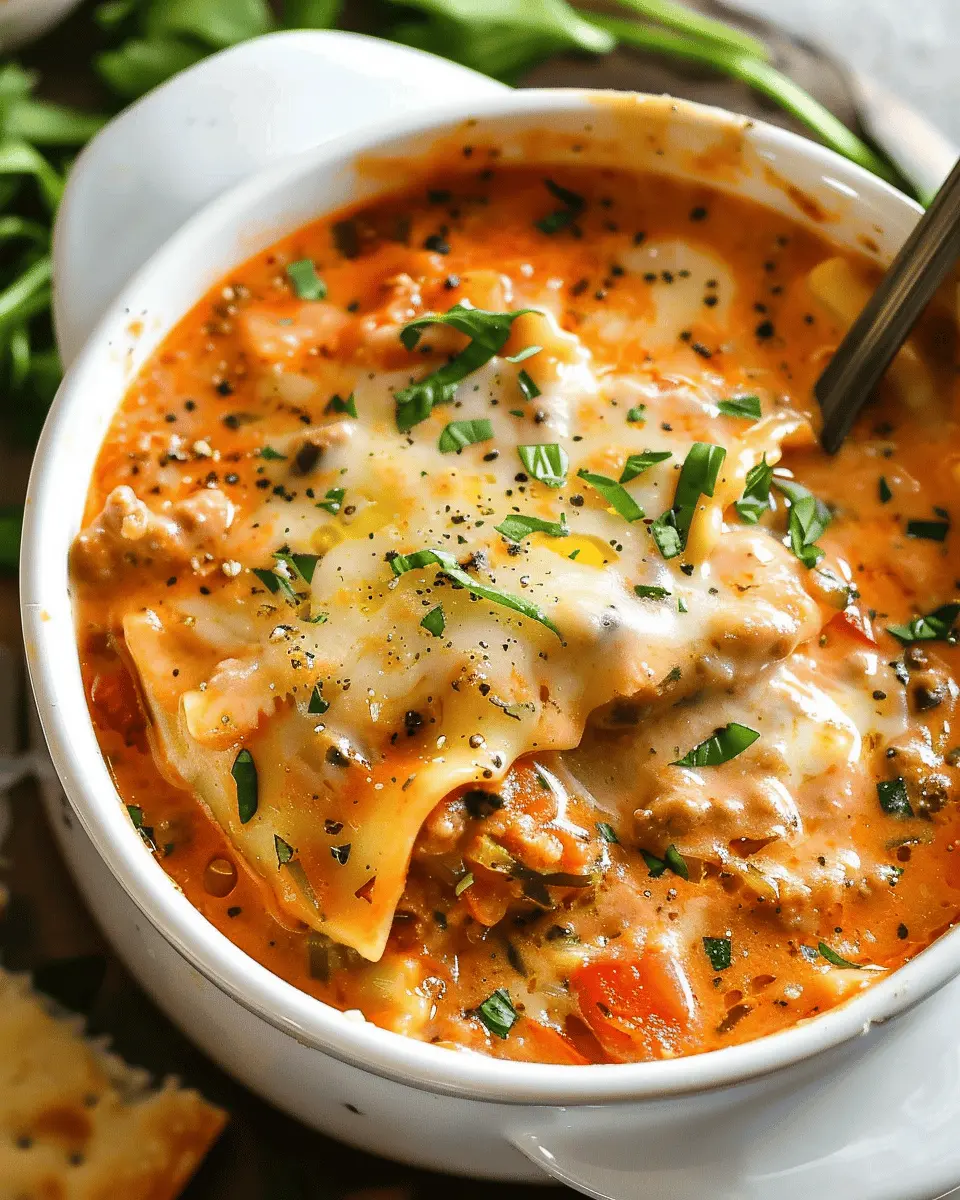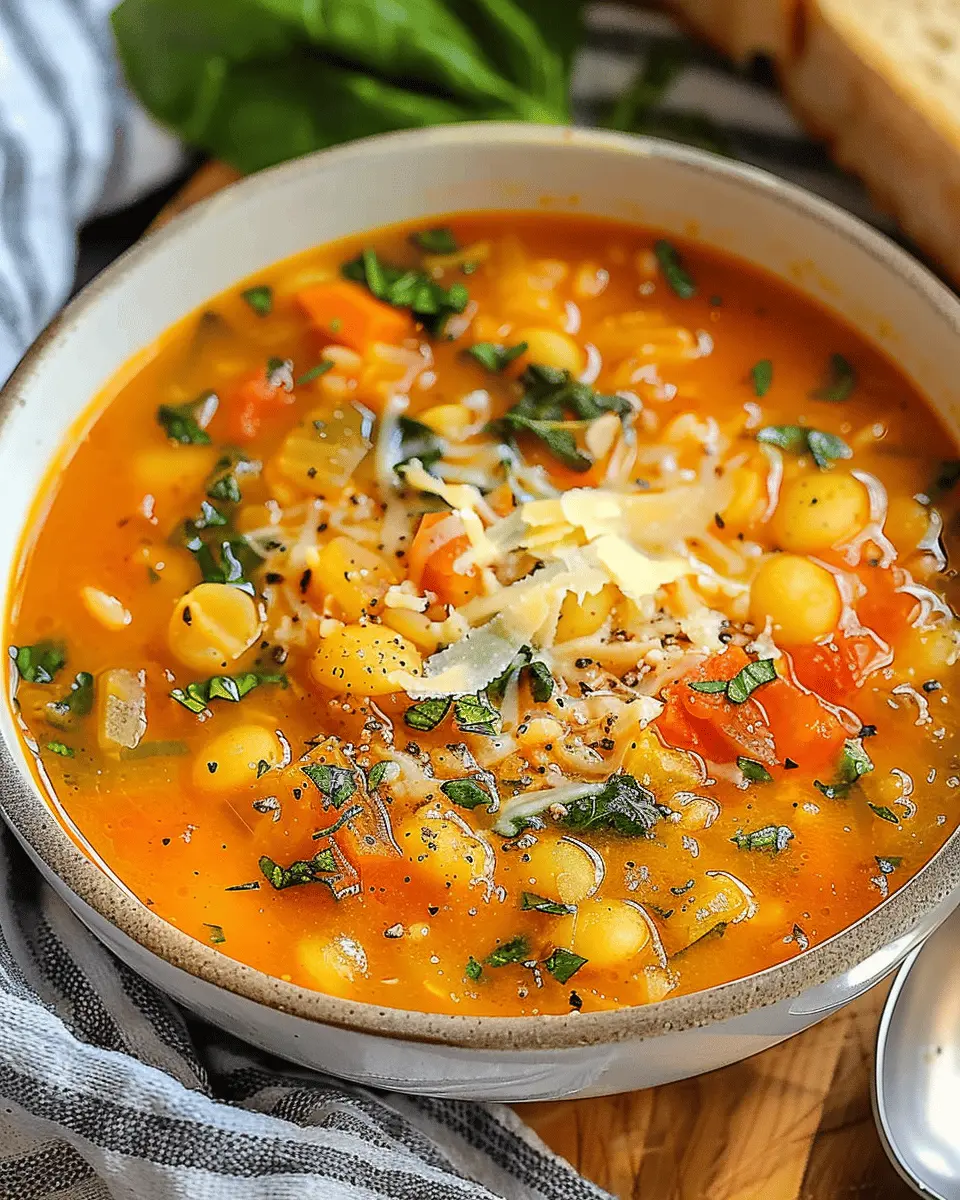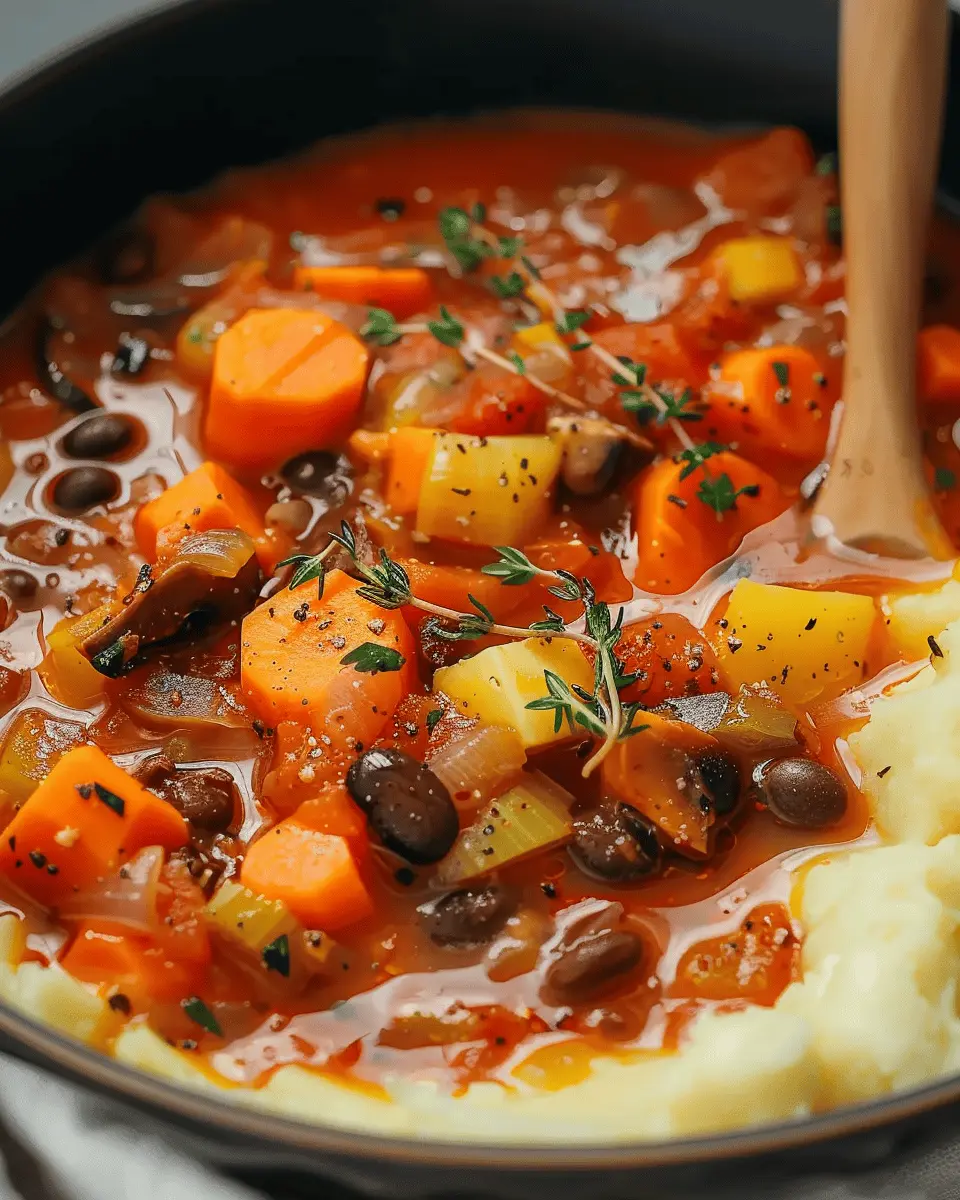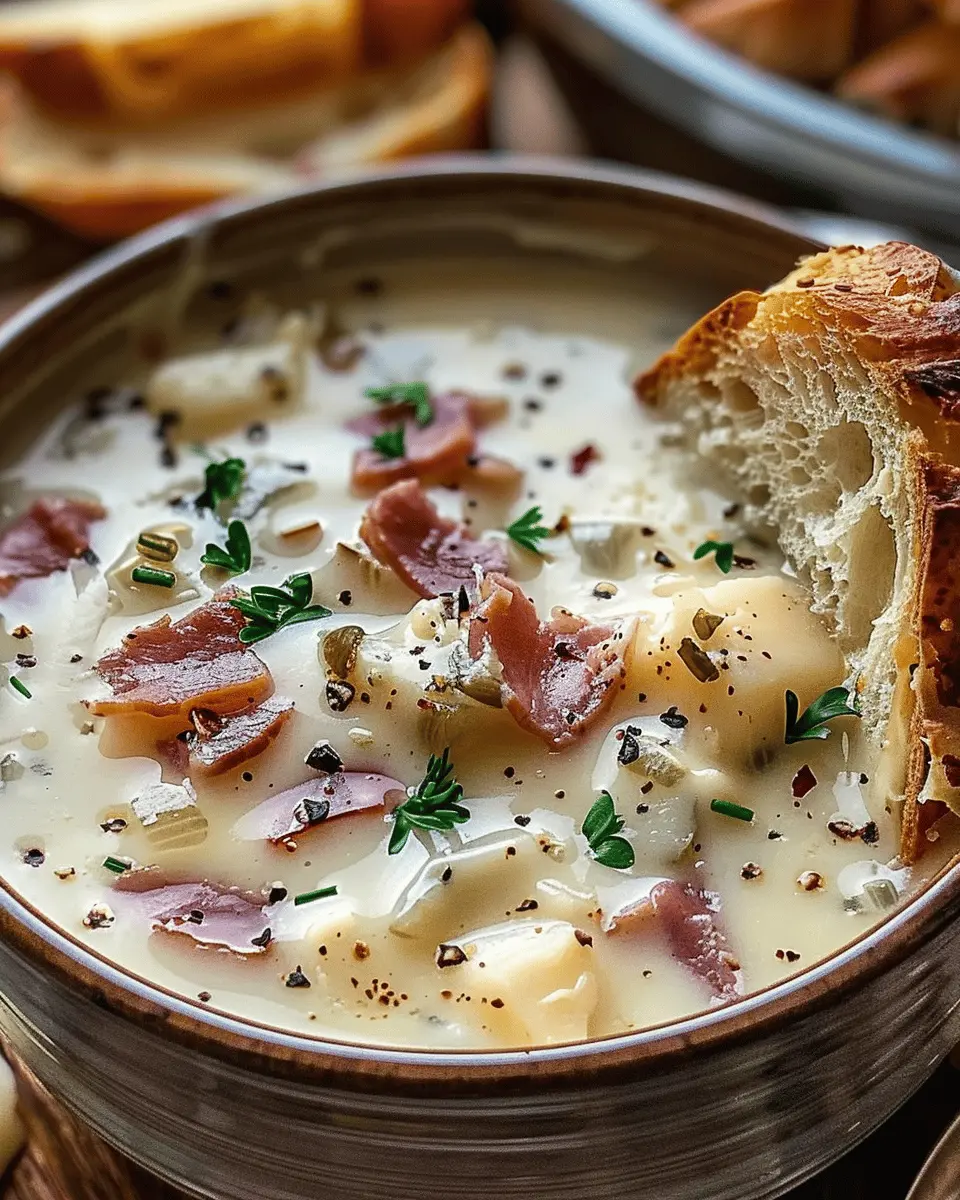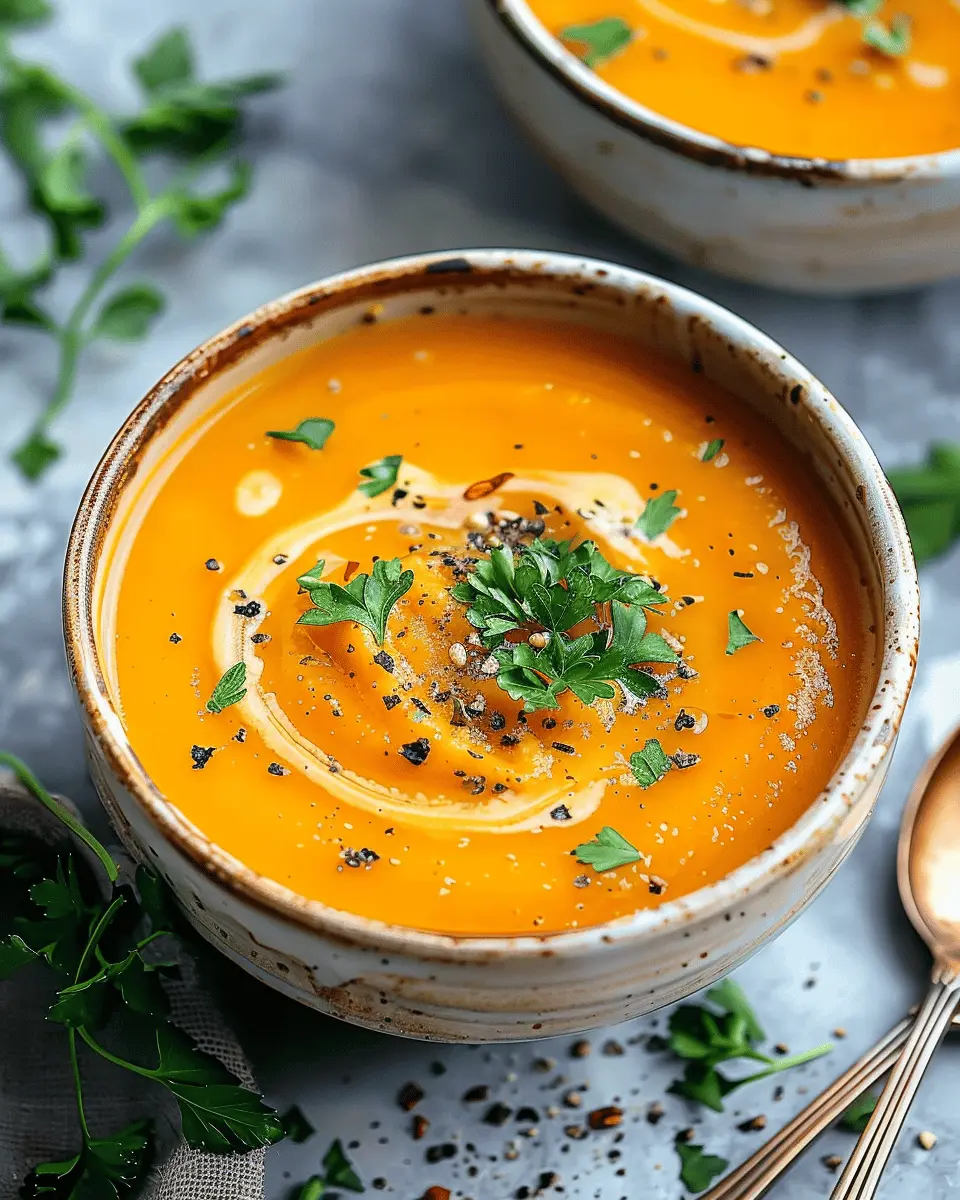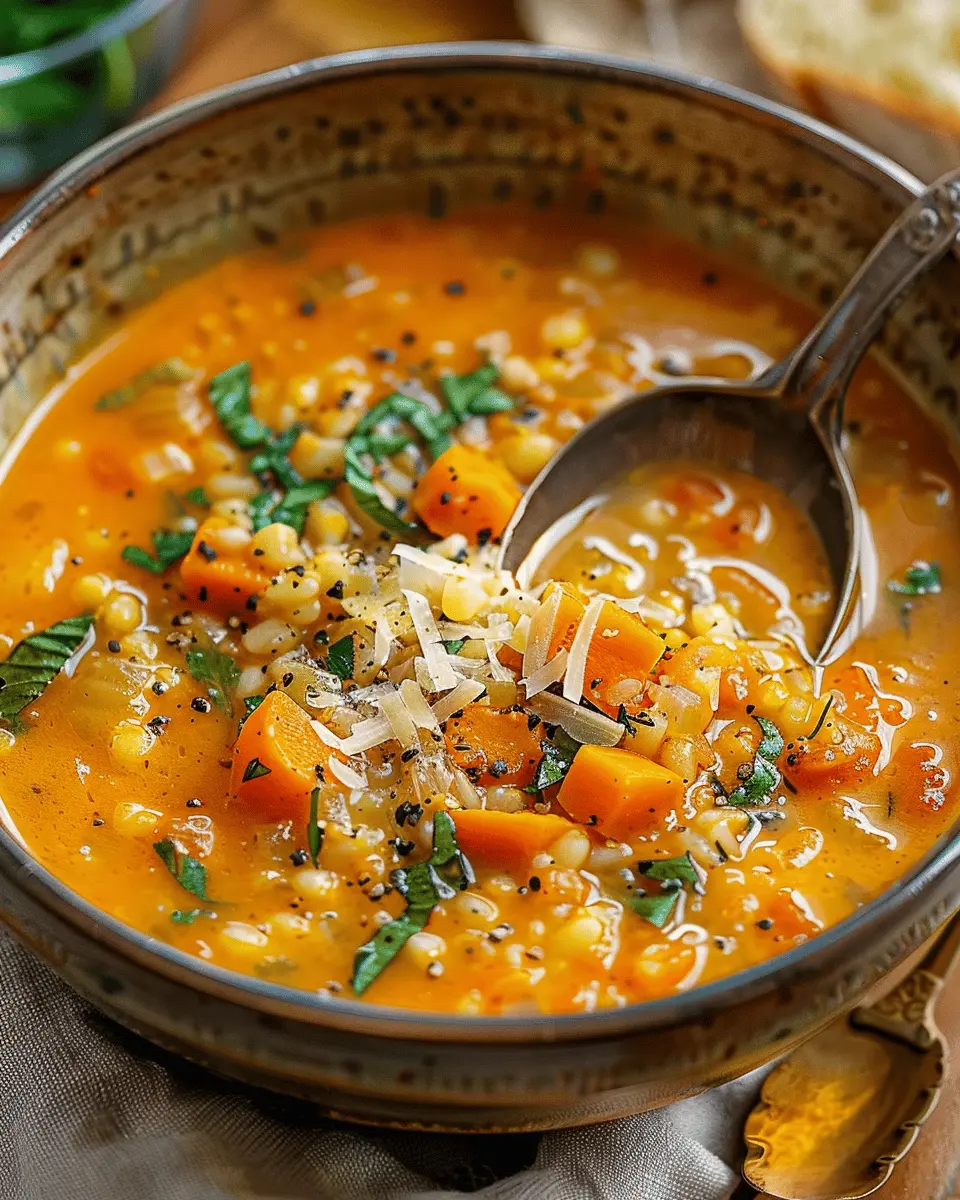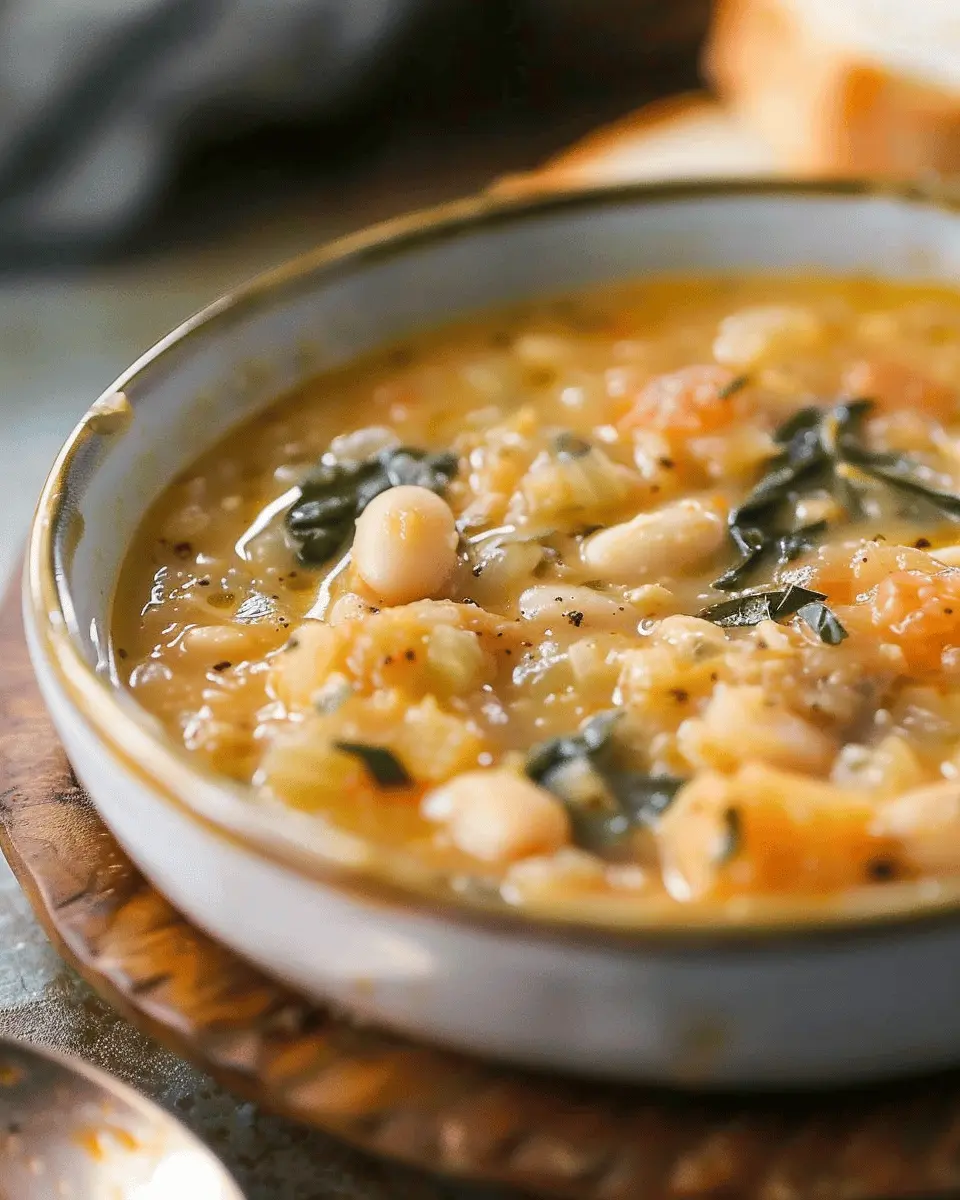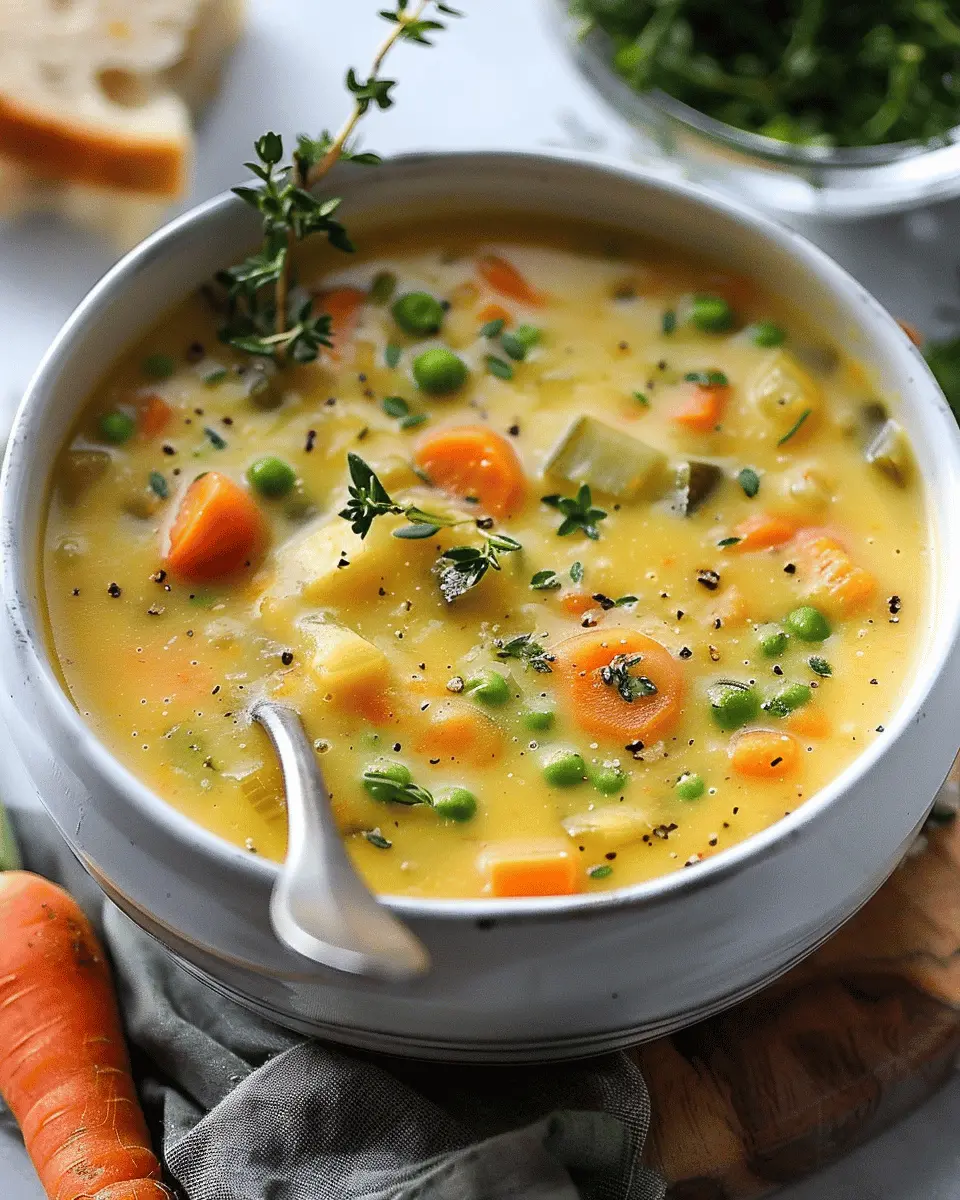Introduction to Winter Minestrone Soup
When the cold winds whip through the streets and the days grow shorter, there’s nothing quite like a warm bowl of winter minestrone soup to cozy up your evenings. This hearty dish is a delightful blend of seasonal vegetables, beans, and typically some form of protein like turkey bacon or chicken ham, making it not just delicious but also incredibly nourishing.
Why winter minestrone soup is the perfect seasonal dish
Minestrone soup has roots in Italian culinary traditions and is often considered a go-to for the fall and winter months. But why is it particularly suited for winter? For starters, minestrone is highly adaptable. You can throw in whatever vegetables are in season—like carrots, spinach, and butternut squash—making it a sustainable choice that supports local farmers. Eating seasonally is not only better for your health, but can also reduce your carbon footprint.
What’s more, warming yourself with a bowl of minestrone is backed by science! Research shows that warm, hearty meals help elevate your mood during the winter months. Studies suggest that nutrients in vegetables, such as those in a winter minestrone soup, may help regulate serotonin levels, making you feel more cheerful even when the sunlight is sparse.
But let’s not forget about turkey bacon and chicken ham. These lean proteins add a smoky flavor and satisfying texture without the extra fat found in traditional meats. They can be a healthier alternative that still delivers on taste. If you’re looking to add some extra depth to your broth, consider using vegetable or chicken broth as a flavorful base.
So, as you prepare to dive into this recipe, think about how you can customize it with your favorites! Adding a sprinkle of fresh herbs, like basil or parsley, right before serving can transform your winter minestrone soup into a fragrant delight.
Whether you’re cooking for a cozy night in or batch-making for the week ahead, this soup is not just a meal; it’s an experience that brings warmth and comfort during the colder months. Get ready to gather your ingredients, because your best winter nights are just a spoonful away!
For more ideas on seasonal cooking and healthy living, check out resources like Eat Fresh and The Seasonal Farm.
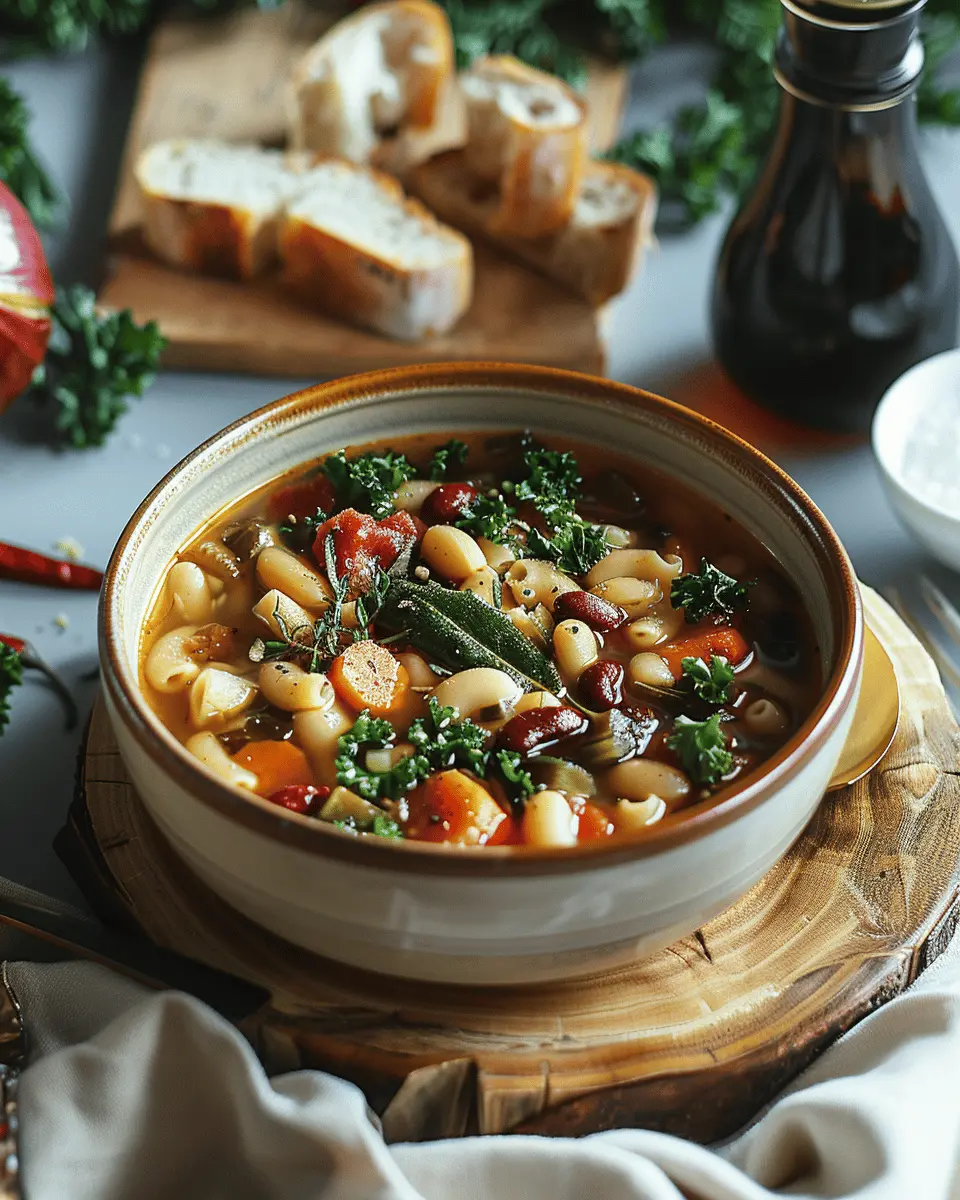
Ingredients for Winter Minestrone Soup
Essential ingredients for a hearty minestrone
When it comes to crafting the perfect winter minestrone soup, selecting the right ingredients can make all the difference. You’ll want to start with the basics to create a robust base:
- Vegetables: Zucchini, carrots, celery, and chopped kale lend color and nutrition.
- Beans: Canned cannellini or kidney beans are protein-packed essentials.
- Pasta: Small shapes like ditalini or elbow macaroni work wonderfully.
- Broth: A flavorful vegetable or chicken broth is key for depth.
- Turkey Bacon or Chicken Ham: For a savory twist, these options can add a nice, smokey flavor.
Incorporating these ingredients will ensure your minestrone is hearty and satisfying, perfect for those chilly nights.
Optional add-ins for extra flavor
Want to take your winter minestrone soup to the next level? Consider adding these flavorful extras:
- Herbs & Spices: Fresh basil, oregano, and a pinch of red pepper flakes can amp up the flavor profile.
- Vegetables: Sweet potatoes or butternut squash can add a delightful sweetness.
- Seasoning: A splash of lemon juice or vinegar at the end balances richness beautifully.
These optional add-ins not only enhance your soup’s taste but also allow you to customize it to your liking. Why not experiment a bit? Your taste buds might thank you later! For more tips on maximizing flavors, check out this guide on soup-making techniques. Whether you keep it simple or get creative, your winter minestrone soup will surely warm your heart.
Preparing Winter Minestrone Soup
When the temperature starts to dip and the daylight hours shorten, there’s nothing quite like a warm bowl of winter minestrone soup to bring comfort and nourishment. This hearty Italian soup is versatile and delicious, packed with seasonal vegetables, beans, and pasta. Follow these simple steps to create a delightful winter meal that’s both satisfying and good for you.
Gather and prep your ingredients
Before diving into cooking, let’s get everything in order. Here’s what you’ll need for your winter minestrone soup:
- Vegetables: Carrots, celery, onions, garlic, zucchini, and kale are perfect for this time of year.
- Protein: Use Turkey Bacon or Chicken Ham for that savory depth.
- Canned goods: White beans, such as cannellini or navy beans, are a wonderful addition.
- Broth: Choose low-sodium vegetable or chicken broth to control the flavor intensity.
- Pasta: Small shapes like ditalini or elbow pasta work best and cook quickly.
- Herbs and spices: Fresh or dried thyme, bay leaves, salt, pepper, and a sprinkle of Parmesan cheese for serving.
Before getting started, wash and chop your vegetables into bite-sized pieces. This not only saves time later but also makes the cooking process smoother. If you love meal prep, consider chopping a bit extra for easy use throughout the week!
Sauté vegetables for a flavorful base
Now that you have everything prepped, it’s time to develop a rich base for your soup. Heat a drizzle of olive oil in a large pot over medium heat. Add your chopped onions, carrots, and celery (often called the mirepoix) and sauté them for about 5-7 minutes until they’re tender and fragrant.
The aroma will start to fill your kitchen, evoking feelings of warmth and comfort. Toss in minced garlic during the last minute of cooking to prevent burning, and mix in your Turkey Bacon or Chicken Ham at this stage. This will render its fat and impart a smoky flavor throughout the soup. Who wouldn’t love a warm hug in the form of soup?
Add broth and bring to a simmer
Once your vegetables are perfectly sautéed, it’s time to add your broth. Pour in about 6 cups of your chosen broth to the pot. At this point, stir in any remaining herbs, like thyme and bay leaves, to infuse the soup with additional layers of flavor. Crank up the heat and bring it to a simmer, letting it bubble gently.
As it simmers, you’ll witness the colors of the vegetables mingling beautifully—this is when the magic happens! Allow it to simmer for about 10-15 minutes. Don’t forget to check the seasoning; a pinch of salt and pepper can do wonders here.
Incorporate beans and pasta
Now comes the fun part: Making it heartier by adding fiber and texture. Stir in your canned white beans (make sure to rinse them first), which are not only nutritious but also provide excellent protein. After a couple of minutes, toss in your pasta. It’s a good idea to reserve a bit of the pasta cooking water for later, as it can help adjust the soup’s consistency if needed.
Allow everything to cook together until the pasta is tender, usually about 8-10 minutes. Keep an eye on your pot, stirring occasionally to prevent sticking.
Finish with herbs and seasoning
When the pasta reaches its desired tenderness, it’s time to adjust the seasoning once more. Remove the bay leaves, and give your winter minestrone soup a taste. You might want to add a bit more salt, pepper, or fresh chopped herbs like parsley for brightness.
As you serve the soup, consider a sprinkle of grated Parmesan cheese on top for that ‘wow’ factor. Pair it with a slice of crusty bread, and you’ve got yourself a complete meal!
Enjoy your winter minestrone soup knowing it’s delicious, nourishing, and perfect for those chilly evenings. Grab a bowl and cozy up with family or friends—you’ve earned it!
For more ideas on delicious soups, check out The Kitchn or Serious Eats for other warming recipes.
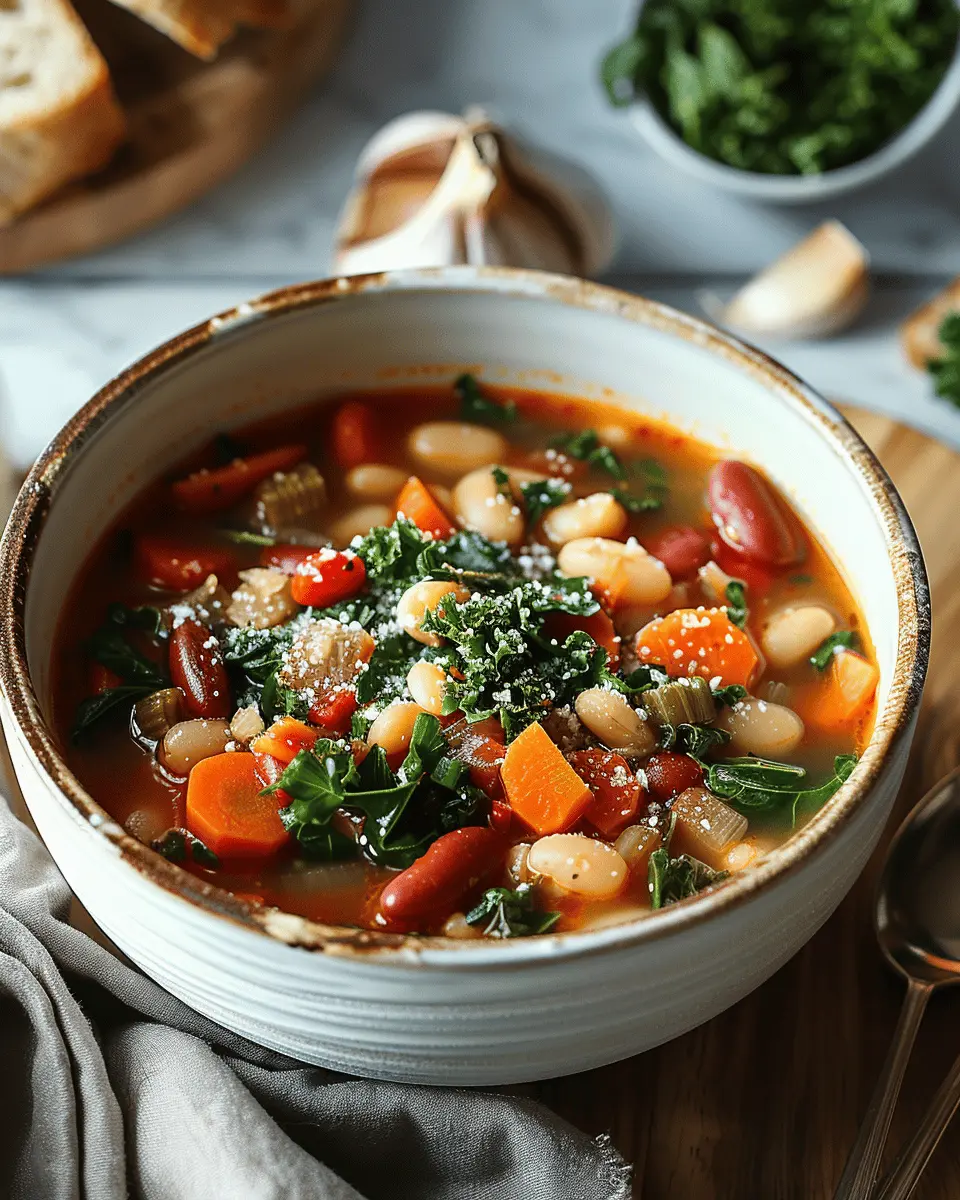
Variations on Winter Minestrone Soup
Exploring Vegetarian Minestrone Options
If you’re leaning towards a full vegetable experience, winter minestrone soup is highly adaptable. Start by swapping out traditional broth for a rich vegetable stock. For a heartier texture, incorporate ingredients like:
- Kale or spinach: Adds nutrition and flavor.
- Chickpeas or lentils: Great plant-based protein sources.
- Butternut squash: Offers a subtle sweetness that pairs beautifully with savory elements.
You can even experiment with grains such as quinoa or farro. You’d be surprised how these small changes can transform your soup, making it a warm hug in a bowl perfect for chilly winter evenings.
Adding Proteins Like Turkey Bacon or Chicken Ham
For those craving a bit more protein, consider enhancing your winter minestrone soup with savory options. Ingredients like turkey bacon or chicken ham bring a delightful smokiness. Just imagine the delicious contrast of flavors when you blend them in:
- Turkey Bacon: Cook it first until crispy, then chop and stir it in for a crunchy texture.
- Chicken Ham: Shredded or diced, it balances the veggies while offering that satisfying umami flavor.
By featuring these proteins, you not only bolster the soup’s heartiness but also provide a family-friendly meal option that pleases even the pickiest eaters. If you’re looking for inspiration or tips on incorporating different proteins, check out this resource on healthy meal prep.
With these variations, your winter minestrone soup can become more than a meal—it transforms into a personalized culinary experience. Who knew soup could be so versatile? Happy cooking!
Cooking Notes for Winter Minestrone Soup
Tips for Achieving the Best Texture
When crafting your winter minestrone soup, achieving the right texture is essential for comfort and enjoyment. Here’s how to get it just right:
- Cut your vegetables evenly: Smaller, evenly-sized pieces cook uniformly, preventing some from being mushy while others remain crisp.
- Add pasta at the right time: Incorporate your pasta during the last 10-15 minutes of cooking to keep it from losing its shape. If you’re preparing a large batch, consider cooking the pasta separately and adding it just before serving.
- Use a variety of vegetables: Mixing textures and flavors not only enhances taste but also adds a delightful bite. Think carrots, green beans, and zucchini.
Common Pitfalls to Avoid
As you embark on this culinary journey, keep an eye out for common missteps:
- Overcooking the greens: Spinach or kale can become slimy if cooked for too long. Stir in the greens shortly before serving.
- Skipping seasoning layers: Don’t just salt at the end! Each step offers a chance to build flavor. A pinch here and there as you add ingredients makes a huge difference.
- Neglecting to taste: Always taste your winter minestrone soup as it simmers! Adjust seasoning to suit your palate.
For expert tips on vegetable preparation, check out this article for more insights. Happy cooking!
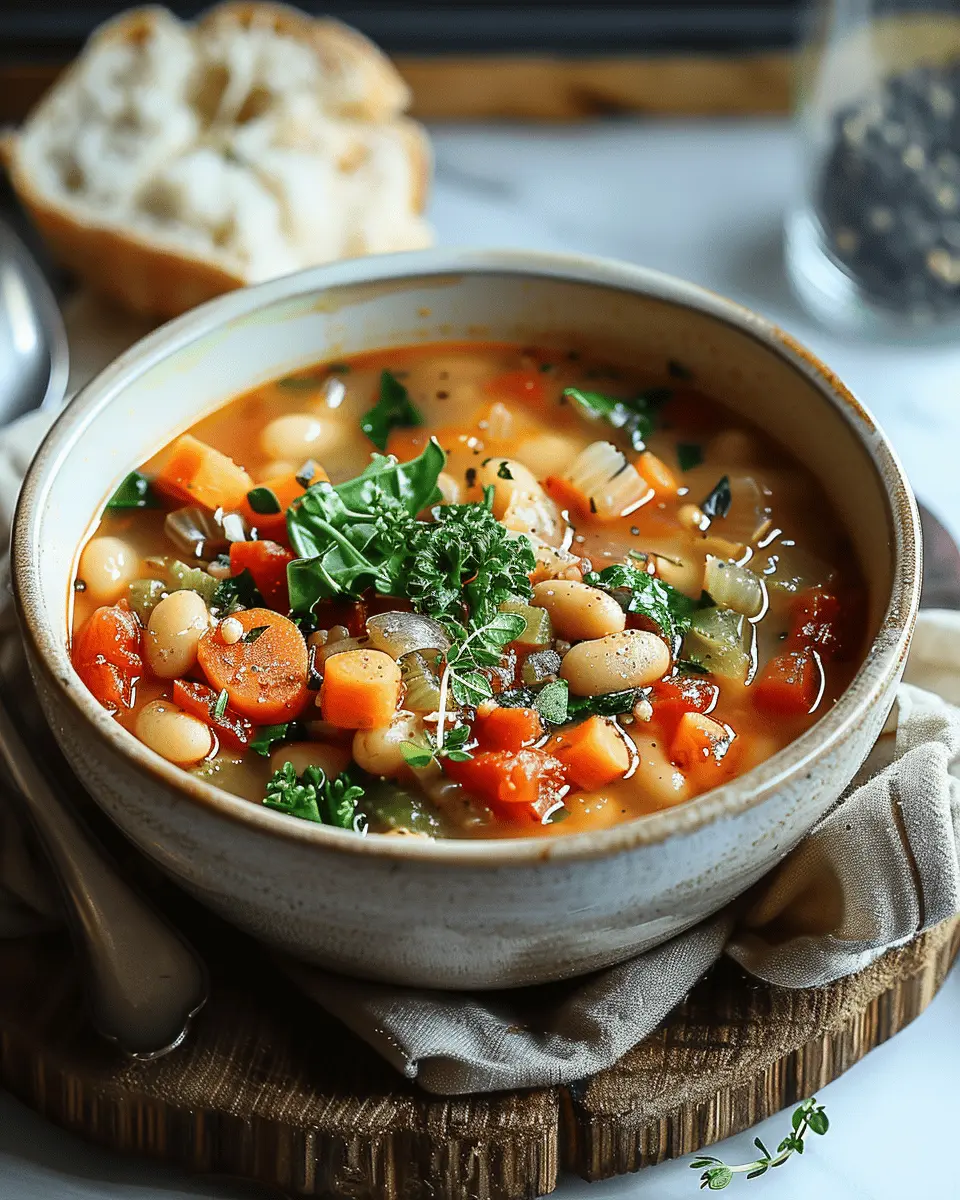
Serving Suggestions for Winter Minestrone Soup
Ideal pairings for a cozy meal
When enjoying winter minestrone soup, a simple yet delightful pairing makes all the difference. Consider serving it alongside freshly baked crusty bread for dipping. You could also whip up a light mixed greens salad topped with a zesty lemon vinaigrette to balance the hearty flavors.
For a heartier experience, try adding slices of Turkey Bacon or Chicken Ham to complement the rich vegetables. If you desire a warm drink, a steaming cup of chamomile or peppermint tea can provide a soothing finish.
Creative serving ideas
Feel free to get a little creative with your serving presentation! Ladle the winter minestrone soup into rustic bowls, and garnish with freshly grated Parmesan cheese and a sprinkle of fresh herbs like basil or parsley.
For that “get-together” vibe, serve the soup in small cups as an appetizer at your next gathering. This adds a casual yet elegant touch, perfect for warming up those chilly evenings. Plus, it’s an easy way to impress your friends!
Curious about more cozy soup recipes? Check out Bon Appétit’s collection. Happy slurping!
Time Breakdown for Winter Minestrone Soup
Preparation Time
Getting ready for your winter minestrone soup adventure takes approximately 15–20 minutes. This is the time to chop your vegetables, measure out your ingredients, and gather everything you need to create a hearty meal. Prepping in advance can also make cooking feel less daunting, especially after a long day at work.
Cooking Time
Once everything is prepped, you’ll spend about 30–40 minutes over the stove. The soup will simmer to perfection, allowing all those flavors to meld beautifully. If you have a little extra time, simmering for longer can deepen those savory notes even further!
Total Time
In total, plan for around 50–60 minutes to whip up your winter minestrone soup. With each step designed to be simple and user-friendly, you’ll find that it’s an enjoyable process. Whether you’re making it for a gathering or just for yourself, this time is well-spent on a comforting meal. If you’re curious about the health benefits of the ingredients you’re using, check out this resource from Healthline for more insights. Happy cooking!
Nutritional Facts for Winter Minestrone Soup
When the temperature drops, a warm bowl of winter minestrone soup can be both comforting and nourishing. Let’s break down the nutritional perks of this hearty dish.
Calories per serving
A typical serving of winter minestrone soup contains about 180 calories. This makes it a satisfying option for lunch or a light dinner without overindulging.
Key nutrients
This vibrant soup not only warms your soul but also packs a punch with essential nutrients:
- Fiber: Ideal for gut health, thanks to the beans and veggies.
- Protein: Enhanced by additions like Turkey Bacon and Chicken Ham.
- Vitamins: A rich source of Vitamins A, C, and K from the fresh vegetables.
- Minerals: Provides necessary potassium and magnesium, which support overall health.
By opting for winter minestrone soup, you’re indulging in a dish that’s as nutritious as it is delicious. Interested in more nutritional insights? Check out healthline.com for detailed nutritional information!
FAQs about Winter Minestrone Soup
Can I make winter minestrone soup in advance?
Absolutely! In fact, making winter minestrone soup ahead of time can enhance its flavors as they meld together. You can prepare the soup and let it cool completely before storing it in an airtight container in the fridge for up to 3 days. If you want to extend its life, consider freezing it. Pour the cooled soup into freezer-safe containers and it can last for up to three months. Just remember to leave some space at the top of the container, as soup expands when frozen.
How do I store leftovers?
To keep your winter minestrone soup fresh, it’s best to store any leftovers in the refrigerator. Use a tight-fitting lid or wrap it well with plastic wrap. Make sure it’s cooled to room temperature before putting it in the fridge to maintain texture. If you notice any separation when reheating, simply stir well and add a splash of broth or water to restore its consistency.
What can I substitute for pasta?
If you’re looking to lighten up your winter minestrone soup or need a gluten-free option, there are several pasta substitutes you can try:
- Quinoa: Adds a nutritious boost with a nutty flavor.
- Zoodles: Spiralized zucchini is a great low-carb option.
- Rice or barley: They both absorb the soup flavors beautifully.
- Chickpeas: For a protein-packed alternative, toss them in for a hearty twist.
Adapting recipes to suit your dietary preferences can transform your cooking experience. Explore more options on trusted cooking sites such as Bon Appétit or Serious Eats for further inspiration and tips!
Conclusion on Winter Minestrone Soup
As the chilly days of winter settle in, there’s nothing quite like a warm bowl of winter minestrone soup to brighten your spirits and nourish your body. This delightful dish is not just a feast for the senses; it’s packed with seasonal flavors that capture the essence of winter produce. Think of the vibrant greens, hearty beans, and comforting turkey bacon or chicken ham—each ingredient contributes to a robust profile that warms you from the inside out.
Emphasizing Seasonal Flavors and Health Benefits
With a variety of vegetables, winter minestrone soup is rich in vitamins, minerals, and antioxidants, making it an excellent choice for boosting your immune system during the colder months. Plus, incorporating beans offers a fantastic plant-based protein source, keeping you fuller for longer.
So, why not customize your version? Toss in some squash or kale—whatever inspires you at your local farmers’ market! This is not just soup; it’s a warm embrace in a bowl, a reminder to take a moment for yourself amidst the busy winter hustle. For tips on healthy eating, check out resources like the Academy of Nutrition and Dietetics. Enjoy a satisfying and nourishing winter with your very own winter minestrone soup!
PrintWinter minestrone soup: Cozy Comfort with Turkey Bacon and Chicken Ham
A warm and hearty winter minestrone soup featuring turkey bacon and chicken ham.
- Prep Time: 15 minutes
- Cook Time: 30 minutes
- Total Time: 45 minutes
- Yield: 6 servings 1x
- Category: Soup
- Method: Stovetop
- Cuisine: Italian
- Diet: Gluten-Free
Ingredients
- 4 slices turkey bacon
- 1 cup diced chicken ham
- 1 onion chopped
- 2 cloves garlic minced
- 3 carrots diced
- 2 celery stalks diced
- 1 can (15 oz) diced tomatoes
- 4 cups chicken broth
- 1 can (15 oz) cannellini beans, drained and rinsed
- 2 cups kale, chopped
- 1 teaspoon dried thyme
- 1 teaspoon salt
- 1/2 teaspoon black pepper
- 1 cup small pasta (e.g. ditalini)
- 1 tablespoon olive oil
Instructions
- In a large pot, heat the olive oil over medium heat. Add the turkey bacon and cook until crispy. Remove and set aside.
- Add onion, garlic, carrots, and celery to the pot. Cook until the vegetables are softened.
- Stir in the diced tomatoes, chicken broth, cannellini beans, kale, thyme, salt, and pepper. Bring to a boil.
- Reduce heat and let simmer for 20 minutes.
- Meanwhile, cook the pasta separately according to package instructions.
- Add the cooked pasta to the soup and top with the crispy turkey bacon before serving.
Notes
- For a heartier soup, add more vegetables or beans.
- Adjust seasonings to taste.
Nutrition
- Serving Size: 1 bowl
- Calories: 280
- Sugar: 2g
- Sodium: 800mg
- Fat: 10g
- Saturated Fat: 3g
- Unsaturated Fat: 5g
- Trans Fat: 0g
- Carbohydrates: 35g
- Fiber: 8g
- Protein: 18g
- Cholesterol: 30mg
Keywords: Winter Minestrone Soup
